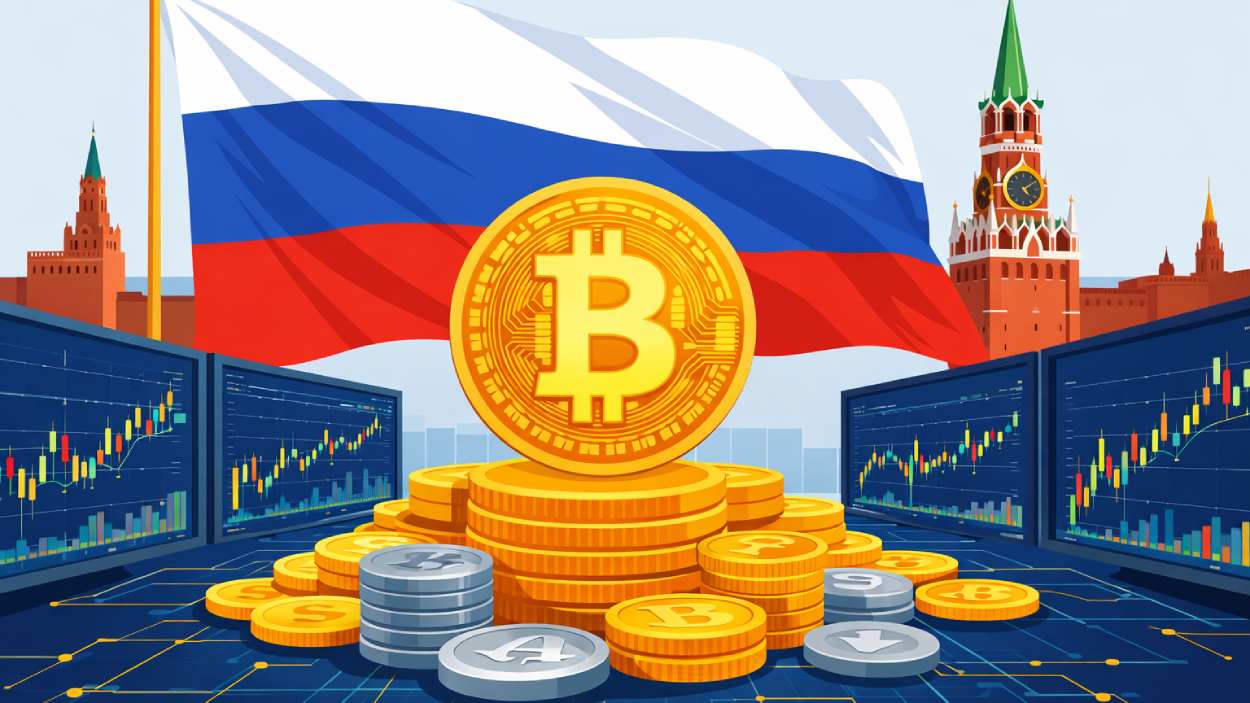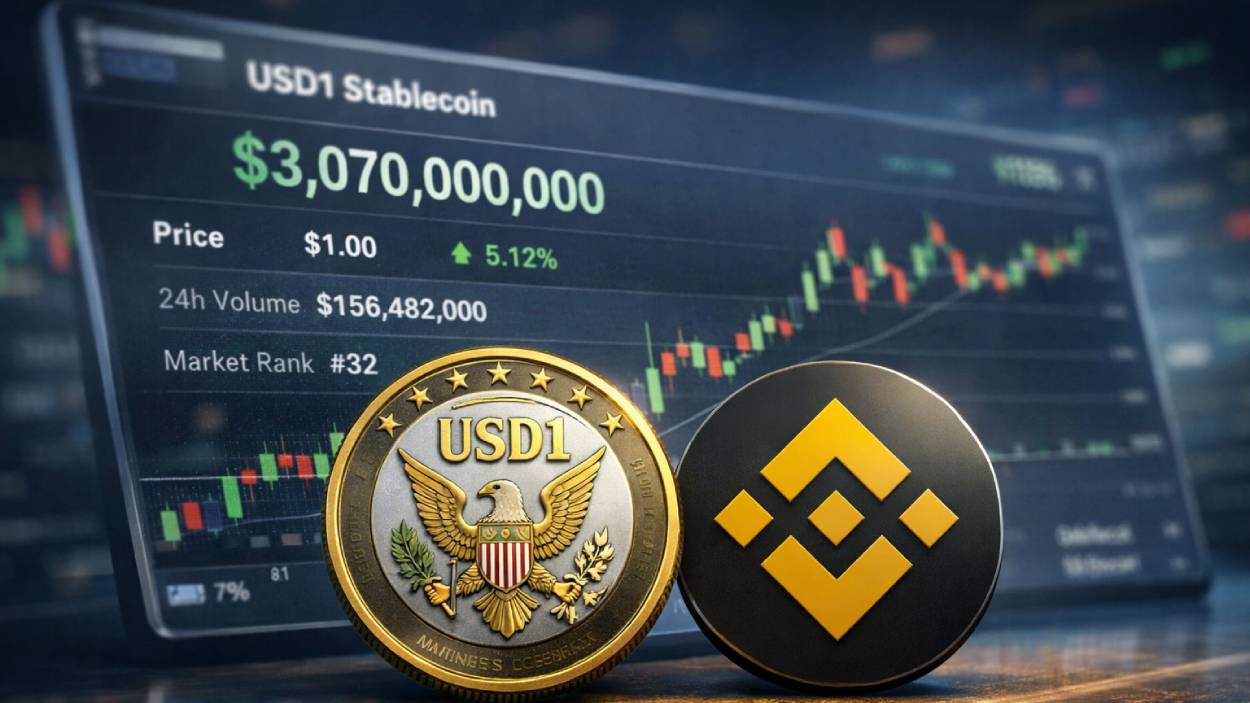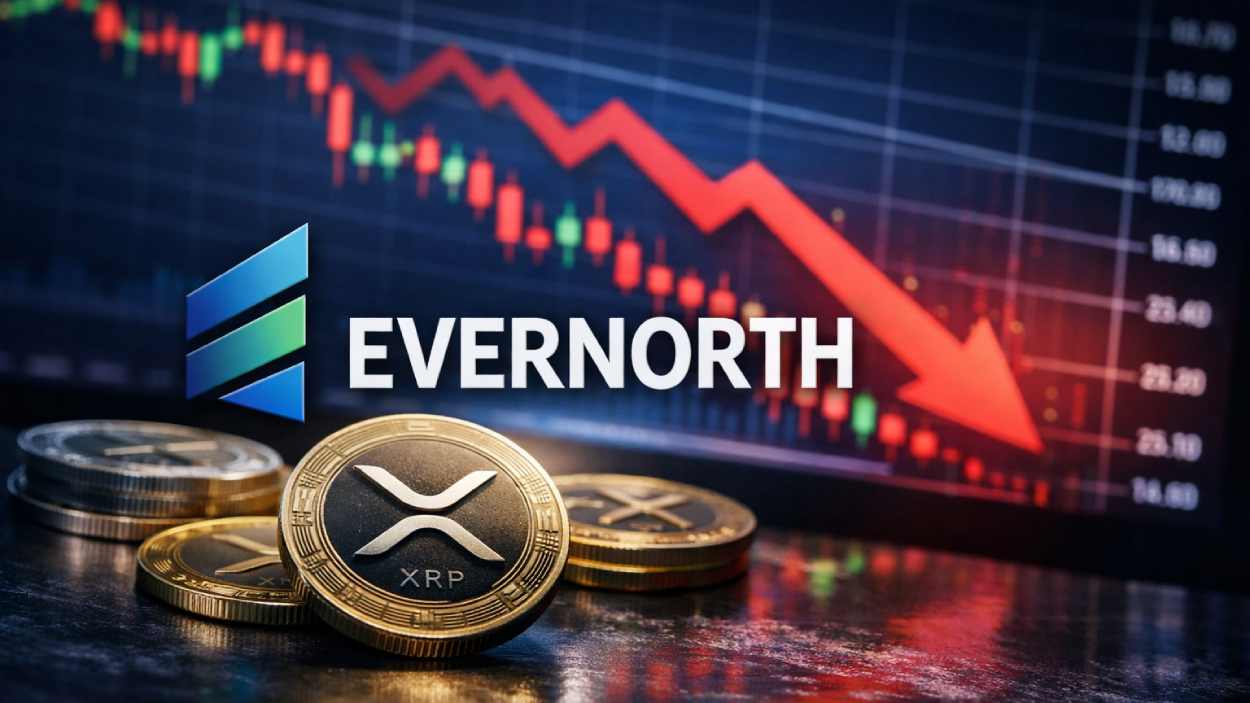Imagine walking into a bustling metropolis where billions of dollars flow every second, an invisible undercurrent of illicit money changing hands. This unseen world of money laundering impacts economies globally, enabling criminals to convert ill-gotten gains into legitimate assets. Today, the fight against money laundering has become more crucial than ever. From global crackdowns to the rise of cryptocurrency, financial systems are constantly evolving to combat these activities. In this article, we’ll explore the staggering scale of the problem and highlight critical trends shaping the future of anti-money laundering efforts worldwide.
Editor’s Choice: Key Global Money Laundering Figures
- An estimated $800 billion to $2 trillion is laundered globally each year, representing approximately 2% to 5% of global GDP.
- A 2025 UNODC report indicates that only 1% of illicit financial flows are detected and seized by authorities.
- The financial services sector faces an average of $180 billion annually in fines due to inadequate anti-money laundering (AML) measures.
- As of February 2025, the Financial Action Task Force (FATF) identified 13 countries as high-risk jurisdictions for money laundering.
- The European Union uncovered that approximately €715 billion to €1.87 trillion is laundered through EU countries every year, significantly affecting the integrity of its financial system.
- Cryptocurrency transactions involved in money laundering activities reached $40.9 billion, reflecting a significant increase from the previous year.
- The U.S. Department of the Treasury revealed that 74% of major money laundering schemes involved real estate transactions, with billions funneled through luxury properties.
Global Anti-Money Laundering Software Market Forecast
- The anti-money laundering software market is projected to reach $10.3 billion by 2033.
- The market is expected to grow at a CAGR of 14.8% from 2024 to 2033.
- In 2025, the market size is estimated at $3.4 billion, gradually increasing each year to $3.9B (2026), and $4.5B (2027).
- By 2028, the market will cross the $5.0 billion mark, reaching $5.2 billion, and then $6.0B in 2029.
- The value rises steadily to $6.8B (2030), $7.8B (2031), and $9.0B (2032) before hitting the $10.3B mark in 2033.
The market is segmented into Software and Services, with Software consistently contributing the larger share throughout the forecast period.

Scale of Global Money Laundering Activities
- Asia-Pacific remains the region with the highest money laundering risks, with illicit flows estimated at $1.5 trillion annually.
- The United States identifies approximately $300 billion in laundered money passing through its financial systems each year.
- Drug trafficking continues to be the largest source of laundered funds, accounting for 30–40% of all global money laundering cases.
- The global casino industry, valued at $300 billion, remains a key avenue for laundering money, with weak oversight in countries like Macau and the Philippines.
- Tax havens such as the British Virgin Islands and Cayman Islands are frequently utilized for laundering activities, moving billions into offshore accounts.
Money Laundering Events Across the Globe
- Drug Trafficking accounts for the largest share of global money laundering events at 29.3%, highlighting its strong connection to illicit finance.
- Financial Fraud is the second most frequent category, representing 22.2% of all money laundering-related incidents globally.
- Money Laundering itself is cited directly in 17.6% of cases, showing the continued prevalence of traditional laundering schemes.
- Events classified as Other make up 14.3%, indicating a diverse range of lesser-known or unspecified activities.
- AML Compliance Failures contribute to 9.5% of global incidents, underscoring institutional lapses in meeting anti-money laundering regulations.
- Violations of AML Failure account for 3.0%, reflecting procedural breaches in enforcement mechanisms.
- International Sanctions are involved in 1.8% of cases, showing minimal but notable global policy impact.
- Both Regulatory Breaches and Reporting Failures are tied at 1.2%, the lowest contributors among the listed events.

Cryptocurrency and Money Laundering Trends
- Cryptocurrency-based money laundering surged in 2025, with an estimated $24.2 billion in illicit crypto transactions linked to laundering activities.
- Bitcoin remains the cryptocurrency of choice for money laundering, with 54% of crypto-laundered funds in 2025 being processed through Bitcoin mixers.
- Decentralized Finance (DeFi) platforms saw a 94% increase in laundering activities in 2025, with cybercriminals exploiting the lack of regulatory oversight.
- The U.S. Treasury revealed that 75% of crypto laundering operations utilized exchanges in countries with minimal Know Your Customer (KYC) regulations.
- Tornado Cash, an Ethereum-based mixer, processed $1.4 billion worth of illicit crypto assets before being sanctioned by the U.S. government in 2025.
- Ransomware payments, typically made in cryptocurrencies, reached an all-time high of $602 million in 2025, further complicating efforts to track laundered funds.
- The rise of privacy coins like Monero has posed significant challenges for regulators, as these coins obscure transaction details, making it nearly impossible to trace illicit funds.
Punishment and Sentencing for Money Laundering Crimes
- In 2025, the average sentence for convicted money launderers in the US is 7.5 years, with fines reaching up to $5 million for major offenders.
- European Union member states enforce mandatory minimum sentences for money laundering, averaging 4 to 12 years depending on the severity of the crime.
- UK law imposes penalties of up to 14 years in prison and unlimited fines for convicted money launderers.
- In China, individuals found guilty of money laundering can face life imprisonment, especially if their actions are linked to organized crime or terrorism.
- Australia witnessed a significant rise in prosecutions, with a 38% increase in money laundering convictions, following stricter regulatory policies.
- South Africa imposed 10-year sentences for money laundering crimes linked to political corruption, highlighting its fight against illicit financial activities.
- The FATF requires its member countries to adopt stringent sentencing guidelines, with countries such as France, Canada, and Germany leading in strict anti-money laundering penalties.
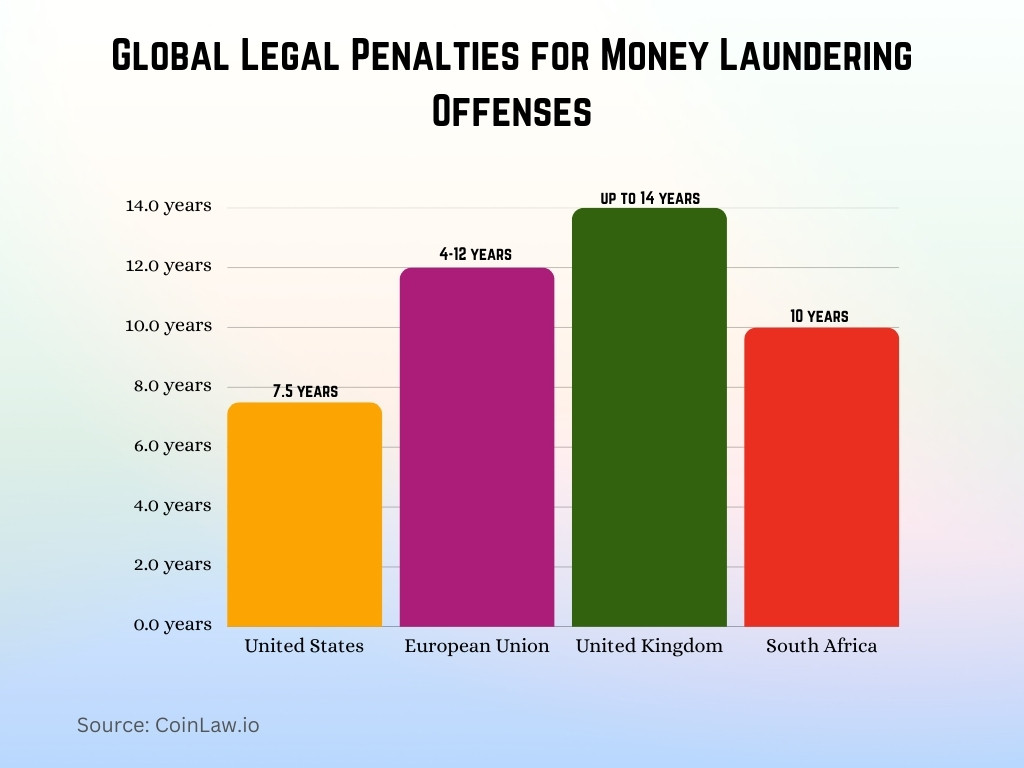
Individual and Offense Characteristics
- A study by the Global Financial Integrity (GFI) found that 80% of money launderers are men, with the majority aged between 35 and 50 years.
- The most common professions linked to money laundering include lawyers, accountants, and real estate agents, accounting for 65% of facilitation roles in laundering schemes.
- Individuals involved in laundering schemes often operate in multiple countries, using offshore accounts and shell companies to hide assets.
- A significant portion of laundering schemes, 46%, are tied to organized crime syndicates, with the Italian Mafia, Russian Bratva, and Mexican cartels leading the global networks.
- The average laundering operation spans 5 to 7 years before discovery, allowing criminals to move millions before being detected.
- Bank employees are involved in 10% of laundering cases, providing insider access to circumvent banking safeguards and red flags.
- Cybercriminals engaging in money laundering often use fake identities and employ techniques such as phishing, dark web marketplaces, and malware to fund their operations.
Global Breakdown of Money Laundering Events by Cause
- Drug Trafficking is the leading contributor to money laundering cases, accounting for 29.3% of all events globally.
- Financial Fraud follows closely, making up 22.2% of money laundering-related activities.
- Money Laundering as a direct offense represents 17.6% of cases worldwide.
- Other unspecified activities contribute 14.3%, highlighting a variety of emerging laundering methods.
- AML Compliance Failures account for 9.5%, pointing to institutional weaknesses in following anti-money laundering protocols.
- Violations of AML Laws make up 3.0% of incidents, showing procedural enforcement gaps.
- International Sanctions are involved in 1.8% of cases, suggesting geopolitical risks play a small but notable role.
- Regulatory Breaches and Reporting Failures are the smallest contributors at 1.2% each, emphasizing underreporting and regulatory oversight gaps.
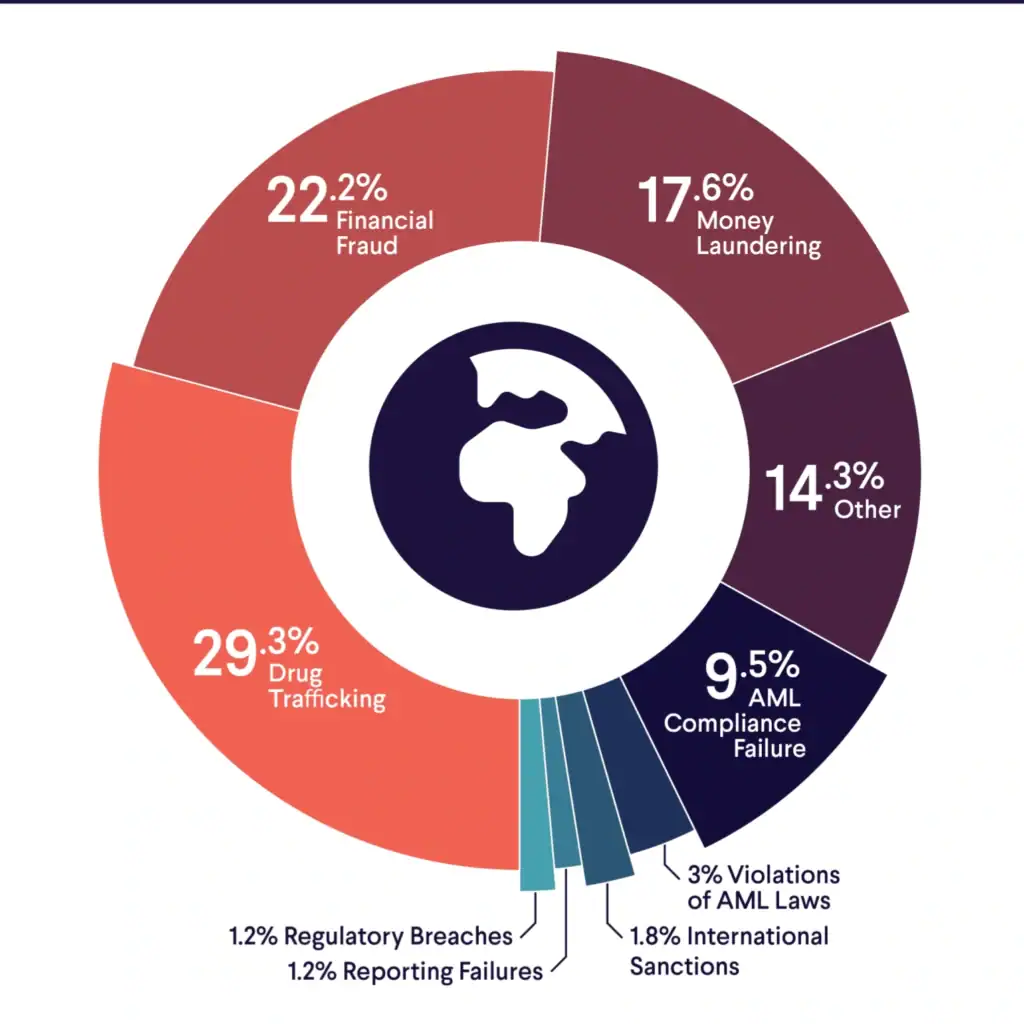
Regional Breakdown of Money Laundering Activities
- Europe remains a hotbed for money laundering, with the UK, Germany, and Switzerland identified as top destinations for illicit financial flows.
- The Asia-Pacific region saw a significant rise in laundering cases, particularly in Hong Kong, Singapore, and Malaysia, where $500 billion was funneled through illegal channels.
- Latin America continues to struggle with money laundering linked to drug cartels, with Colombia and Mexico accounting for over $300 billion in illegal flows.
- The Middle East, particularly Dubai, emerged as a preferred destination for money launderers due to its booming real estate market and lenient financial regulations.
- Africa saw an increase in laundering activities, with Nigeria and South Africa at the forefront, responsible for moving over $100 billion in illicit funds annually.
- Canada reported a 20% rise in financial crimes linked to laundering, especially in real estate transactions across Vancouver and Toronto.
- The Caribbean continues to serve as a tax haven, with $100 billion being laundered through the Bahamas, Cayman Islands, and Barbados annually.
Money Laundering Statistics by Country
- United States continues to experience significant money laundering activities, with estimates suggesting that between $800 billion and $2 trillion is laundered globally each year, a substantial portion of which flows through the U.S. financial system.
- Russia remains a major hub for money laundering, with an estimated $500 billion in illicit funds laundered annually, primarily driven by organized crime syndicates.
- China faces ongoing challenges with money laundering, particularly through underground banking systems and the casino industry, with estimates indicating around $200 billion laundered each year.
- Mexico continues to grapple with money laundering activities, with drug cartels responsible for laundering approximately $50 billion annually, much of which is reinvested in real estate and legitimate businesses.
- Switzerland, known for its banking secrecy laws, still sees around $60 billion in laundered funds despite efforts to tighten regulations.
- Canada’s real estate market, particularly in Vancouver, accounts for approximately $46 billion in laundered money each year.
- United Kingdom remains a focal point for money laundering activities, with the National Crime Agency acknowledging the realistic possibility that the scale of money laundering impacting the UK annually is in the hundreds of billions of pounds.
- Australia has identified approximately $60 billion being laundered annually, with significant activity tied to organized crime and international fraud schemes.
- Nigeria continues to be a hotspot for corruption-linked laundering, with over $15 billion moving through its financial system yearly.
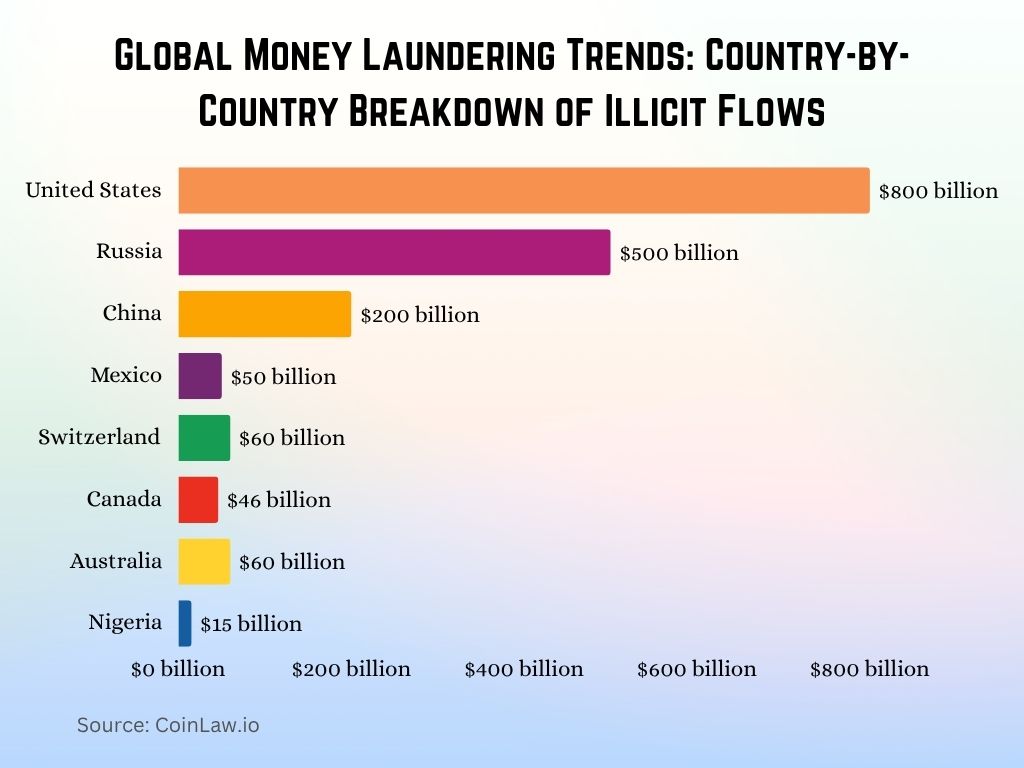
Money Laundering Issues and Causes
- Weak enforcement of existing anti-money laundering (AML) regulations remains a global issue, with 65% of countries failing to fully comply with Financial Action Task Force (FATF) standards.
- The rise of digital financial services has created new opportunities for laundering, as criminals exploit loopholes in peer-to-peer (P2P) platforms and mobile banking.
- Trade-based money laundering (TBML) remains one of the most challenging methods to detect, involving falsified trade documents and commodities. $1 trillion is estimated to flow through this method each year.
- Corruption continues to facilitate money laundering, especially in developing countries, where government officials are involved in 40% of laundering cases.
- The legal profession is increasingly involved in laundering schemes, with 30% of global laundering cases involving lawyers or accountants who manipulate trust funds and real estate transactions.
- The global financial crisis of 2008 left many banks vulnerable, and 20% of recent money laundering activities have been tied to the systemic weaknesses exposed during that time.
- Shell companies and offshore accounts continue to be widely used in laundering, with over $10 trillion hidden in offshore tax havens globally.
Government and Financial Sector Responses
- U.S. Department of Justice imposed a total of $42 million in penalties on Brink’s Global Services for AML violations, including a $37 million civil monetary penalty and a $5 million forfeiture over three years.
- European Union advanced its anti-money laundering framework with the 6th Anti-Money Laundering Directive (6AMLD), enhancing consistency and reducing regulatory divergence across member states.
- China implemented a revised Anti-Money Laundering Law effective January 1, 2025, aligning with international standards to combat evolving financial crimes and protect state security.
- Australia introduced new licensing for Digital Asset Platforms (DAPs) in April 2025, aiming to strengthen AML regulations and enhance financial integrity in the cryptocurrency sector.
- UK’s Financial Conduct Authority (FCA) and National Crime Agency (NCA) conducted Operation Machinize, resulting in the freezing of over £1 million in assets and the closure of multiple businesses linked to money laundering activities.
- Canada accelerated amendments to its Proceeds of Crime (Money Laundering) and Terrorist Financing Act, bringing key changes into force by April 1, 2025, to bolster its AML framework.
- FATF and the Egmont Group released a joint report on Trade-Based Money Laundering, providing guidance to detect and disrupt illicit financial flows through trade transactions.
Recent Developments
- FATF’s February 2025 report lists Russia, Turkey, and the UAE among jurisdictions under increased monitoring due to strategic deficiencies in their AML/CFT frameworks.
- Over 50 countries have implemented new cryptocurrency regulations in 2025, aiming to curb money laundering through digital assets.
- The European Union’s Anti-Money Laundering Authority (AMLA) became operational in mid-2025, coordinating national authorities to ensure consistent application of AML/CFT rules across member states.
- In Mexico, real estate agents and notaries are mandated to report suspicious transactions, enhancing the country’s AML efforts.
- U.S. banks have significantly increased investments in AML technology in 2025, focusing on AI and machine learning tools to detect suspicious financial activities.
- The United Nations, in collaboration with Interpol and the World Bank, launched a global task force in 2025 to address the rise in cryptocurrency-related money laundering.
- Nigeria is progressing towards exiting the FATF’s “Grey List” by meeting 37 out of 40 AML standards, enhancing enforcement capabilities, and international cooperation.
Conclusion
Money laundering remains a complex, ever-evolving challenge for governments and financial institutions worldwide. As criminals exploit new technologies and financial systems, the global response must be equally adaptive. With coordinated international efforts, stricter regulations, and advances in technology, there is hope that the gap between laundered funds and recovered assets can be closed. As the data shows, countries, industries, and policymakers must work together to stay ahead of this pervasive issue.






































